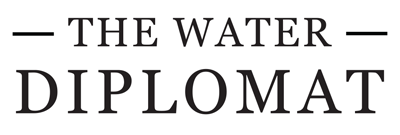Persistent drought causes acute water shortages in Mexico City
5 Mar 2024 by The Water Diplomat
Mexico City is facing a severe water shortage following a persistent drought across large parts of the country, with supplies to residents being restricted to several hours a day. According to a report released on the 15th of February by Mexico’s National Water Commission CONAGUA, almost 60% of the country is currently experiencing moderate to exceptional drought. In Mexico City, water restrictions were announced across 284 neighbourhoods in late January, implying that these areas would only receive water for several hours at during certain days of the week. These restrictions follow a 8% cut in water supplies in October and a further cut of 25% in November.
Mexico City obtains a large proportion of its of its water through the Cutzmala system, a complex inter-basin transfer scheme built on the Cutzmala River between during the 1980’s and 1990’s to transfer water eastwards from mountainous and forested sub basins in Michoacan and Mexico state to supply 15m³/second to the capital city. The development of this inter-basin transfer infrastructure is ultimately the result of a fundamental geographical mismatch between water supply and demand in Mexico. Precipitation in the country ranges from below 500mm/annum in the north of the country to more than 2,000mm/annum in the southeast, and around 650 mm/ annum in the central region where Mexico City is located.
Most of the metropolitan valley in which Mexico City is located lies within a river basin – the Valley of Mexico Basin - surrounded by mountains and volcanoes which function as the water towers for the city, historically providing the surface and groundwater resources that enabled urban growth. For decades, groundwater from local aquifers provided the bulk (68%) of the water supply for the city, and the rapid growth of the city meant that these groundwater sources were increasingly overexploited.
Writing in 2006, Professor Cecilia Tortajada commented that “throughout the decades, the population growth and the planned and unplanned urbanization have resulted in an uneven race for the federal and local governments to construct infrastructure and provide essential services to the population, including water supply and sanitation”.
Recently, researchers at the Autonomous University of Mexico have warned that ensuring access to water and the distribution of that water across the city may become unsustainable as soon as 2028. According to the researchers, there is an urgent need to invest in the improvement of the water distribution network to reduce leakages, in rainwater harvesting systems, and in water treatment and reuse systems. Key aspects such as the current level of water leakage in the city.
